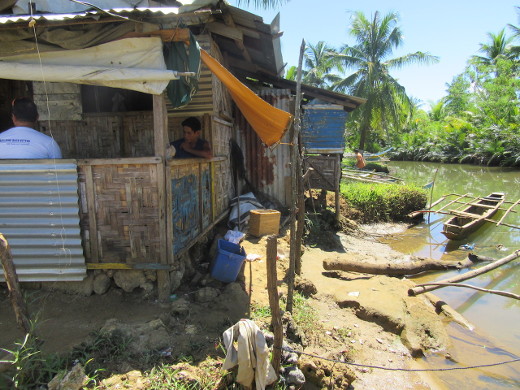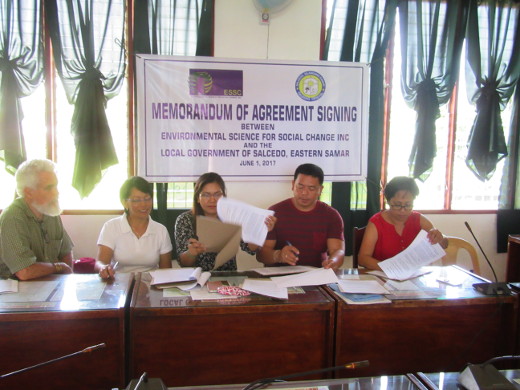A dancing house. This is how many survivors of Typhoon Haiyan describe the substandard relocation houses that have been built. “If you shake them, they will move,” said one survivor. Four years after the disaster, building infrastructure that is able to withstand extreme weather conditions better remains a challenge in the Philippines.
“Many housing efforts are in retrofitting and are done without consideration of proper land-use planning. Houses are built quickly because people want to see the houses immediately. Later, problems arise because site planning had not been done well,” stated Environmental Science for Social Change (ESSC) Executive Director Sylvia Miclat.

ESSC is responding to the challenge through a two-year housing development project, supported by the Xavier Network and the Philippine Jesuit Province. The local government of Salcedo in Eastern Samar had approached ESSC for assistance in its relocation efforts in Cagaut, one of the coastal villages that bore the brunt of Haiyan in 2013. The local officials want to create durable homes that would not be washed away by another storm surge or blown away by strong winds. “It’s not rebuilding the same temporary houses that will be hit again by the typhoons that may come, but rebuilding better and safer,” said Cristina Fernández-Duran, Xavier Network Emergency Programme Coordinator. The project in Cagaut is one of two projects the Xavier Network is supporting in the country.
ESSC is connecting the local community with people who are experts in understanding hazards and can help them find a more strategic way of coping that builds resilience in the long term. Last year, it built the capacities of some local governments and the communities in the region in understanding the hazards in their landscape and their susceptibility to the risks especially during extreme rainfall events. The understanding and integration of geohazard maps using free and open source software applications were found critical in developing sound and informed decisions in land-use planning.
“Through the maps, the community was able to see where their houses are, if they are built in no-build zones or in a flood-prone area, where the school should be, where the evacuation centre should be,” shared Fernández-Duran. “If you construct somewhere where it’s going to get flooded in the future, it’s useless.”

This year, efforts are centred on the housing project, which broke ground on June 2. The San Roque Ecovillage, a name the community chose for the 37-house project, is situated on a relocation site in upper Cagaut, far from the shoreline and away from the path of a storm surge.
Alternative construction materials are being explored and where the community can be actively involved in the production. These are different from those usually used in most low-cost social housing projects in the Philippines. The use of micro-concrete roof tiles instead of galvanised iron sheets is an example. As Miclat explained, stronger materials that can withstand strong winds and storms are sought for this low-cost housing project, in addition to an environmentally sustainable house design.
Since the community is involved in the production of some of the construction materials, ESSC will assign a competent overseer to ensure the quality of the materials produced. Miclat hopes this new skill can be a source of livelihood for the community in addition to farming and fishing. “If they are able to do their work very well, they can supply other housing projects,” she said. “It’s gender-neutral too; both men and women can do it.”
ESSC is careful to document all the processes involved in the project with the goal of developing knowledge products to guide other post-disaster reconstruction efforts. “As a Jesuit organisation, what we want to do is to establish a learning reference for accompanying a community and a supportive local government in building back better,” said Miclat.
Fernández-Duran agrees, pointing out the way ESSC uses science to help the local community make informed decisions. “I like the way they apply their scientific expertise very closely to the community,” she said. “It’s a kind of knowledge that should be exportable to other countries because it’s really, really useful.”


